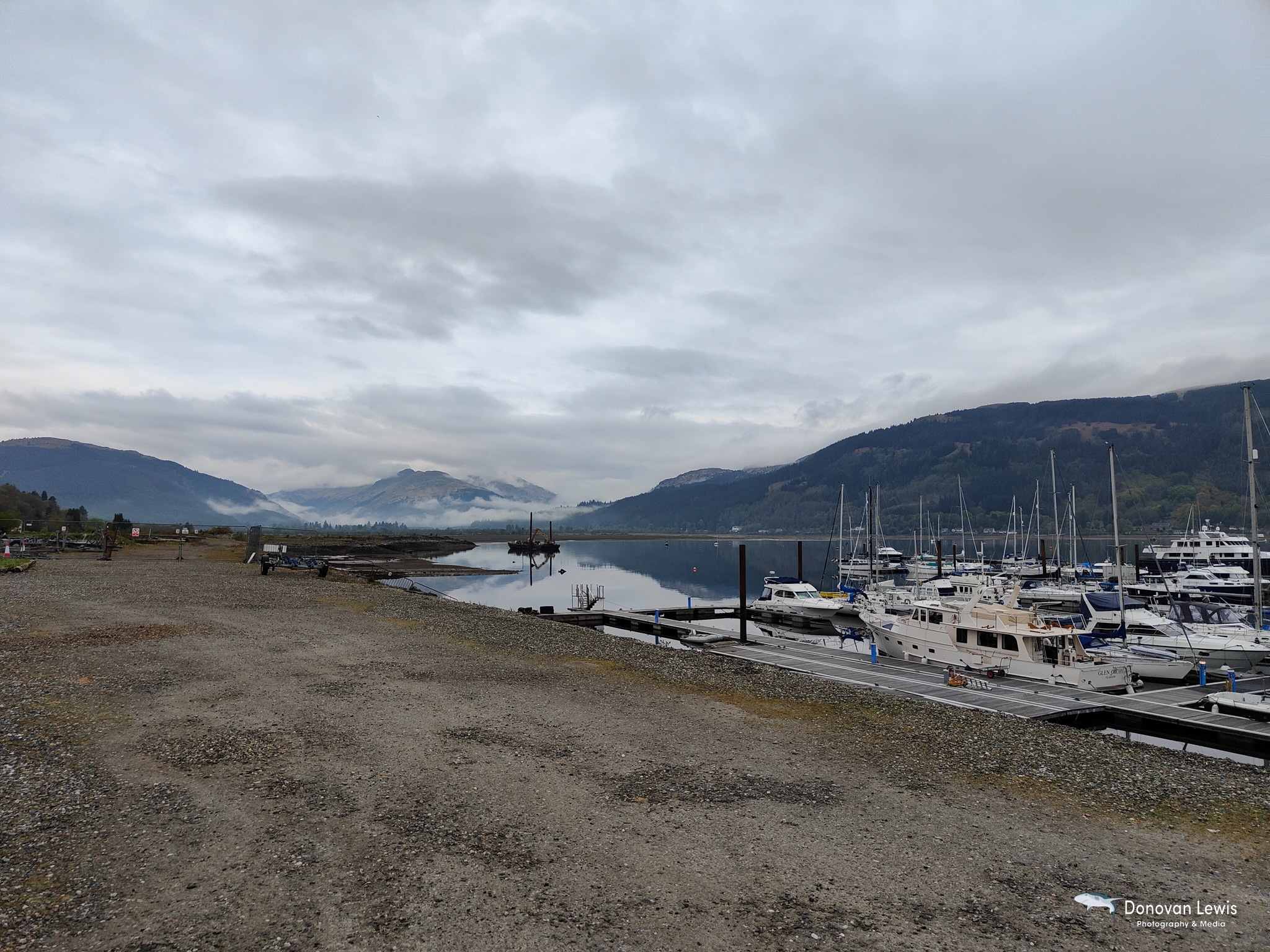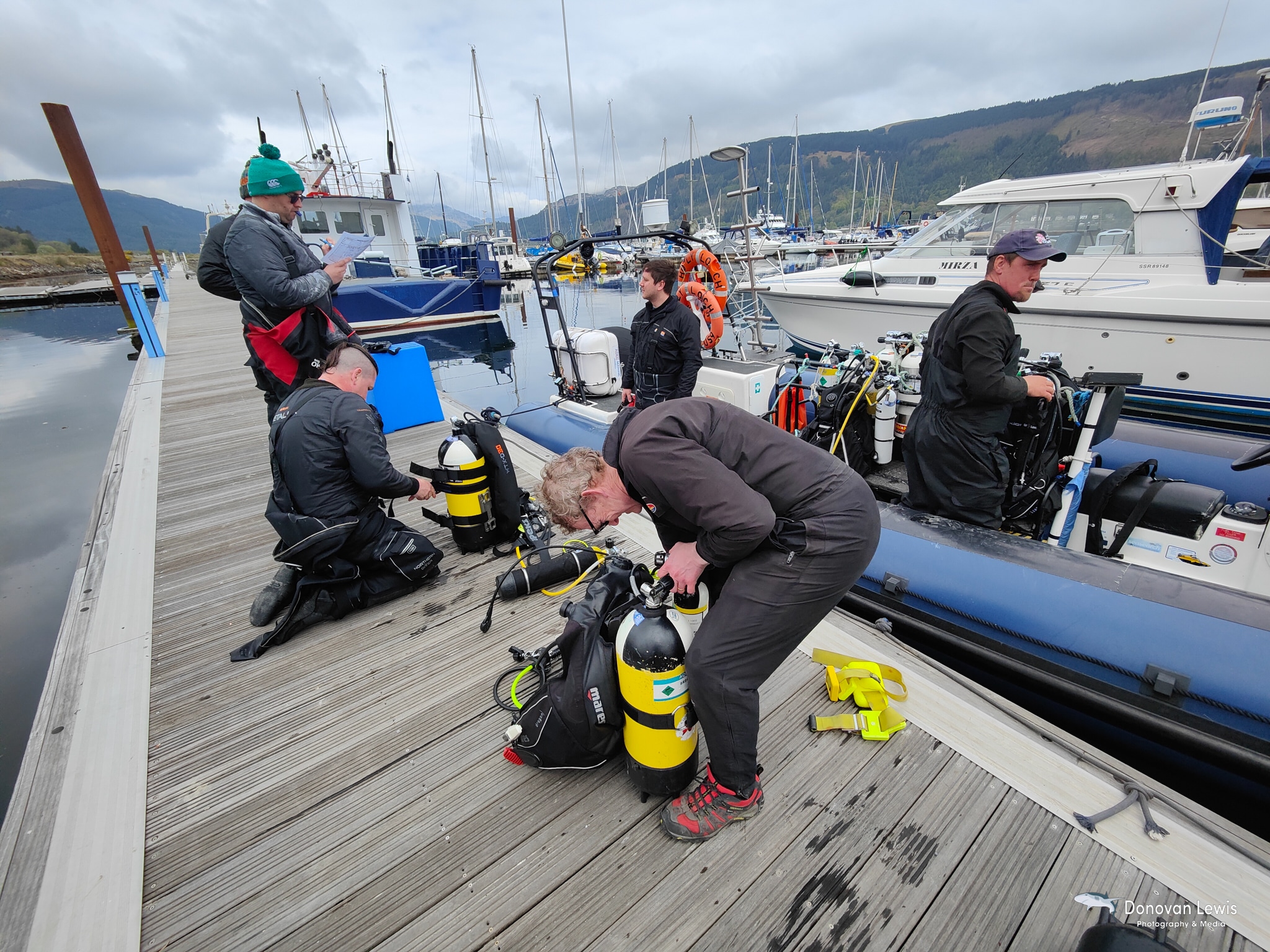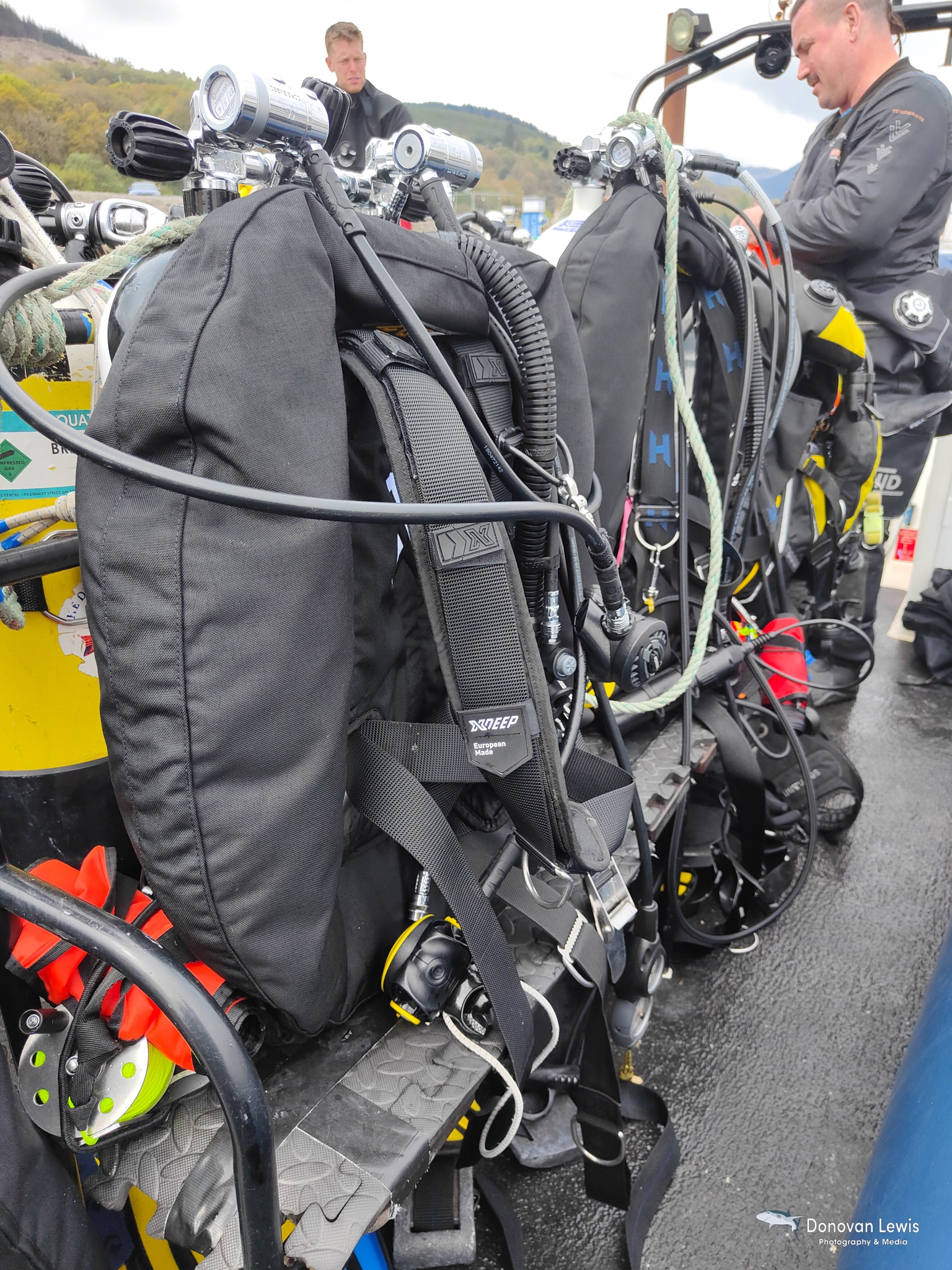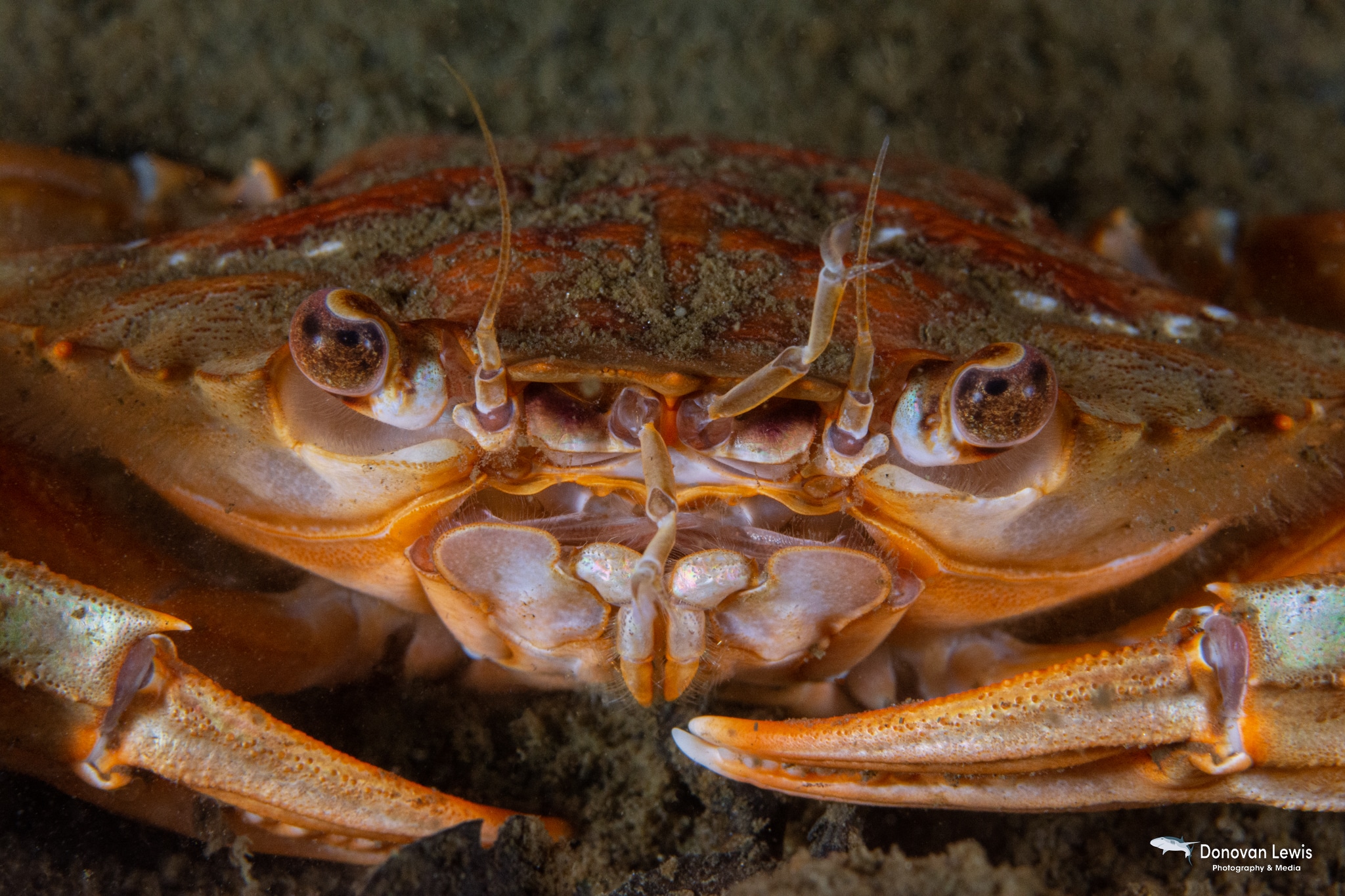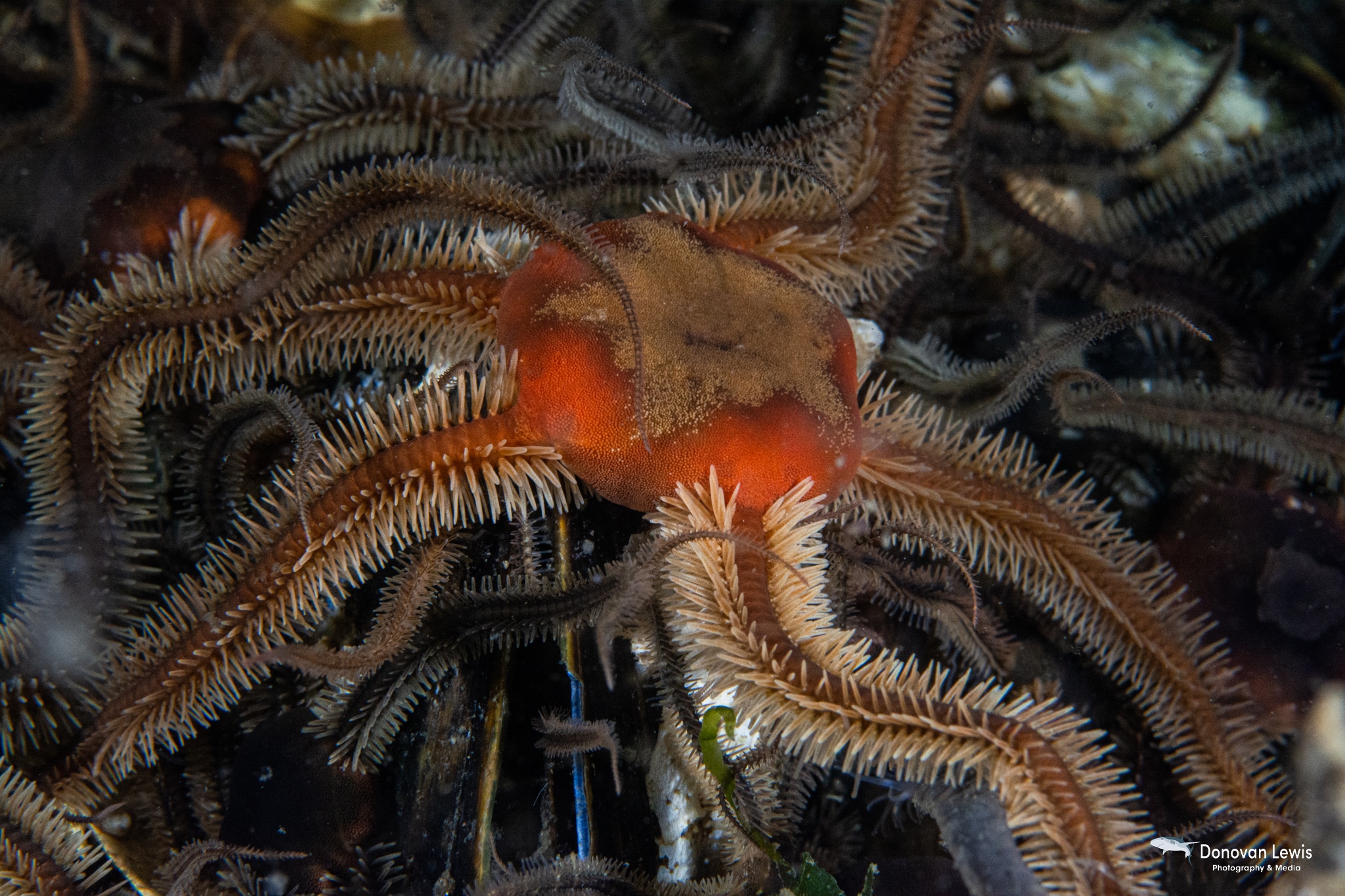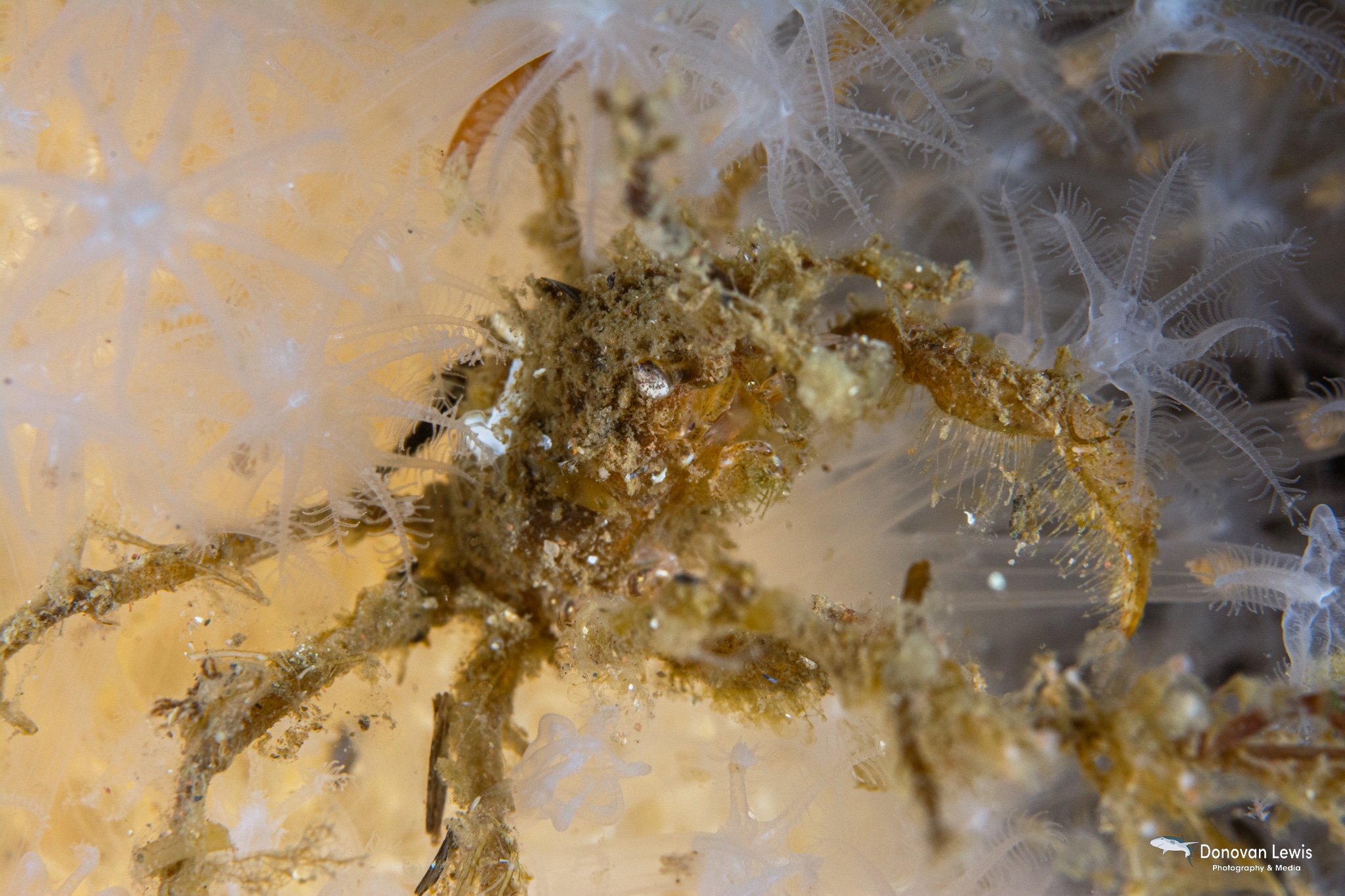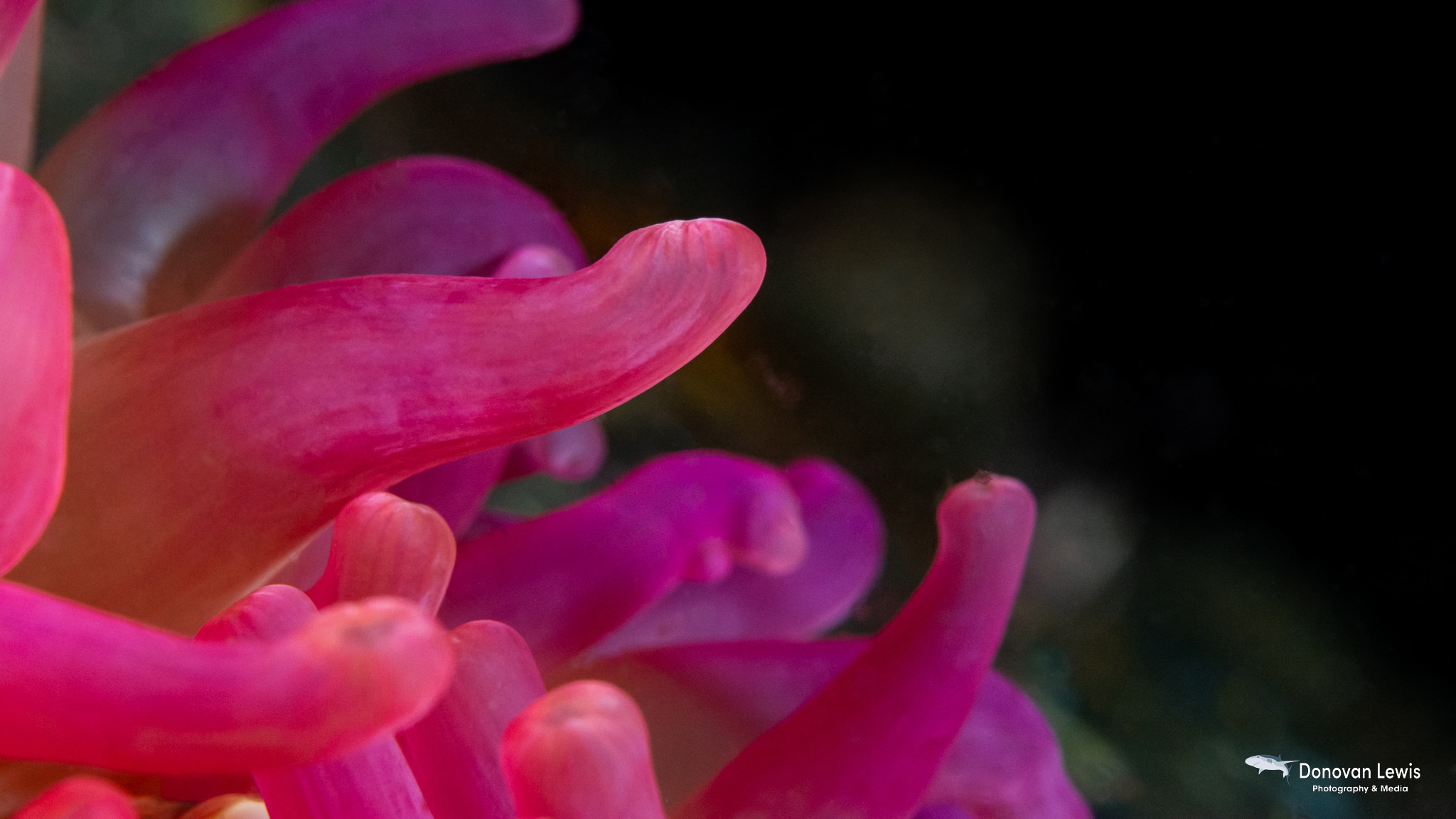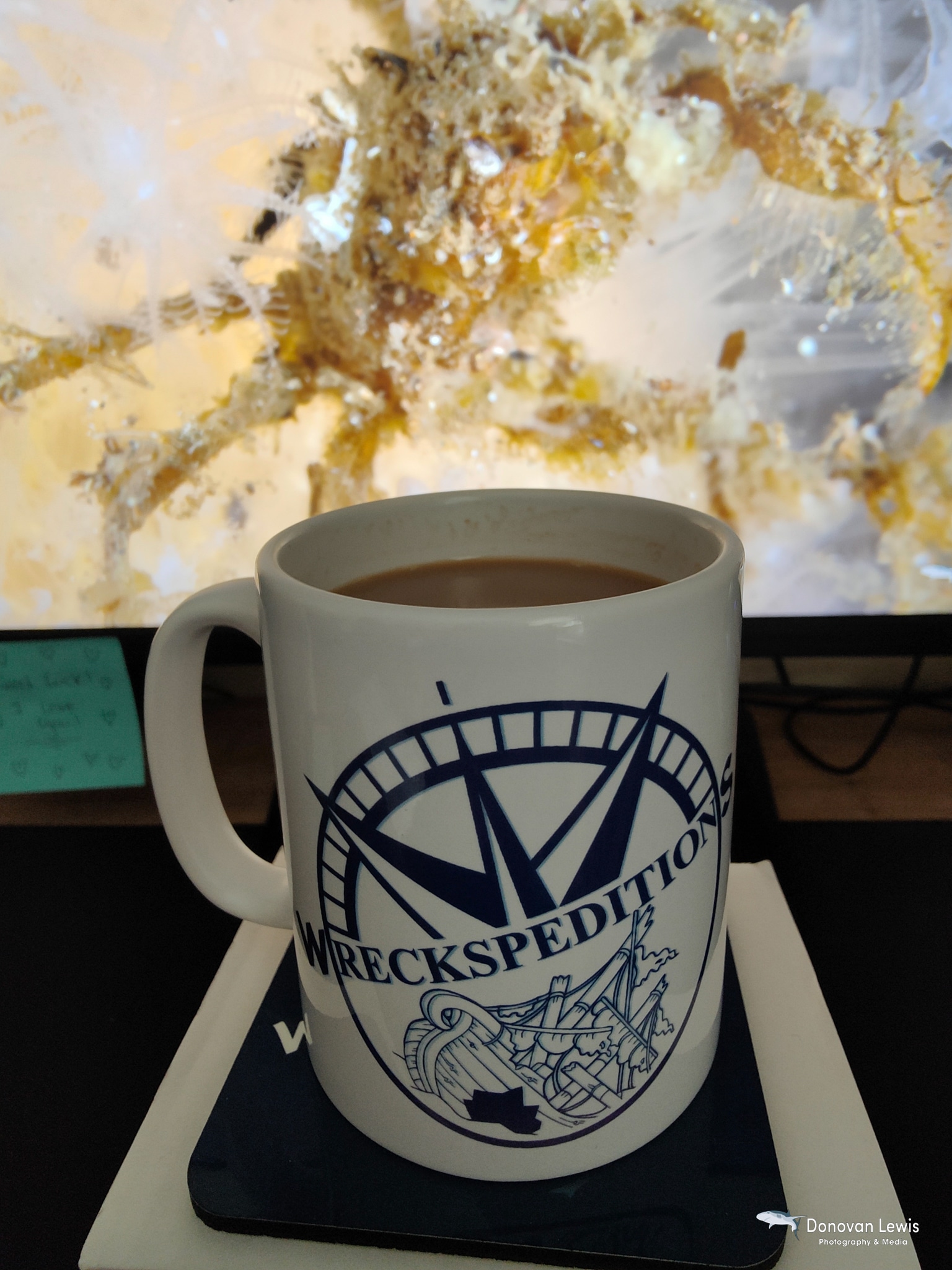News
Getting Wrecked with Wreckspeditions

Diving is all about exploration. Whether you go under the waves to explore lush reefs or caves, or maybe you go underwater for the wrecks. There’s something truly spectacular about diving on a wreck, whether it’s the familiarity of a man-made structure, or perhaps the history of how it sank. wrecks have forever attracted and captivated scuba divers and those who hear about them. But what do you get when you combine fantastic diving, with breath-taking scenery, and five star service, this is of course diving Scotland’s Lochs with Wreckpeditions.
I was invited on the trip back in January by a friend who is an instructor at BSAC Huddersfield, the group were amazing with a wealth of different diving skills, qualifications, and personalities, it made for a truly amazing group of people to go diving with.
We were diving with Wreckspeditions who are based out of the marina in the town of Dunoon on the Cowal Peninsula. It’s ran by power couple Jason and Claire, both are divers with Jason being a Yachtmaster Coastal Skipper and RYA instructor. Jason is who we were with throughout our time diving in the Clyde and local Lochs.
We arrived at our accommodation in Dunoon, after getting a short ferry ride, around 5pm. We settled in and unpacked before heading out for food just after 6pm. After eating we found a local pub where had a drink which was great for me to get to know everyone in the group and vice versa, we planned with Jason to be at the marina at 8:15am to be ropes off at 9am. Before we could set off, we of course needed to set up gear, load it on to the boat and get a safety briefing before disembarking.
Jason arrived shortly after 8:15am and introduced himself, he explained about some rough weather out on the Clyde, and we discussed dive sites for the next few days whilst we loaded gear. Jason did a safety briefing and explained how he runs his dive operations on the Starfish Enterprise which is a Redbay Stormforce 7.4m RHIB and she’s able to cater for up to 8 divers comfortably. Jason explained that he’s a very hands-on Skipper and says he would rather help you and hand stuff to you when you’re gearing up rather than you trying to grab it yourself when sat in your gear.
We loaded up just after 9am and set out for the Clyde to a dive site known as the Gantocks, it was just a long enough steam to learn more about the local area and dive sites, I asked Jason about bad weather conditions and he stated that if they get a Westerly wind, this goes against the flow of the River Clyde which flows in from the direction of Glasgow, with this wind it creates a chop rather than a swell which can be unpleasant to go out in. We learnt this the hard way however, and as soon as we came round the top of Dunoon and into the Clyde we were met with the chop and wind.
Jason took us to a site known as the Gantocks and did a dive briefing, explaining the site and best dive routes to take. The briefing lasted only a few minutes but already Will, one of the divers, was sick over the side. We got geared up in our buddy pairs/groups with the others waiting for them to enter the water before gearing up, Jason structured it this way to stop the chaos of 7 divers gearing up all at the same time and the same when trying to get everyone out all at the same time. After a short wait myself, Alex and Will jumped in but due to the visibility we lost each other almost immediately after jumping in, we all surfaced, found each other, and went down but unfortunately, we lost each other again. Will and I surfaced to find Alex on the surface once more and we decided to call the dive.
Once we got back on board I was being helped out of my equipment and suddenly felt really sick, as soon as I was out my gear, I walked the edge of the boat and was sick, it was here that I remembered my sea legs are not what they used to be after a long hiatus of not being on boats due to Covid.
Once everyone is out of the water we head back to Dunoon for a drink and something to eat, this is something that my newly empty stomach appreciated. We had about an hour to eat before heading back to the boat, myself and Alex were diving Twinsets through the trip and the ease of this was represented in not having to switch or fill cylinders between dives which made the surface interval that much more relaxing.
Back out on the boat for the second dive, which was only around 300m from the marina on a pair of old WW2 Landing Crafts that were scuttled in the Holy Loch after the War. We were told that there was a shot line between the two wrecks, and they’re spaced about 20m apart. I, Alex and Will jumped in and followed the shot line down, we all collectively thought how good the viz was as we descended past 10 metres, however this wasn’t too last.
As we hit 12m the viz dropped to mere inches, I found the wreck by banging into it, which made for a good giggle when we surfaced. Alex found the Shot line and we all swam the 20m to the second wreck where we spent 45 minutes on it. The bad viz didn’t bother us in the slightest and made the dive more memorable and exciting, as it was virtually a night dive due to the viz. We were swimming around the wreck searching for life and virtually every surface was covered in some form or life, from Sea squirts, Anemones, Fan Worms, and Crabs there was something to be seen everywhere you looked.
We surfaced and headed back to shore where we removed our gear to be filled and headed back for a shower and to grab a bite to eat, we had an early night as it was an early start for a long steam to Loch Goil the next day.
We arrived the next morning at 8am for ropes off at 8:30am for the 45min steam up to Loch Goil, on the way up we went past some of the most breath-taking scenery and landscapes, passing a Submarine dock and seeing countless Harbour Porpoises on the way out. The first dive was on the One Tree Wall, a site with a ledge at 6m which drops off down to the bottom, Jason said that at 25m there’s an overhang with a vast array of life, so that’s where we decided to have our max depth at. Today I was with Rob and Ray, we were the second buddy group in and dropped down to the overhang, here we found hundreds of Fan Worms and Sea Squirts. But as we moved shallower, we found that the wall was littered with small shelves covered in Snails, Crabs, and small fish. The wall was incredibly dramatic, it was something you would usually visualise in places like the Red Sea or Maldives.
After Surfacing we headed to The Boat Shed Café, a local spot to eat and Moore up at, here we were treated to an incredible view of Loch Goil along with a hot drink and some food, even if they no longer served the Haggis and Caramelized onion Panini which unfortunately really ruined Jason’s day. Sitting here was almost like sitting in a different country and is a regular stop for Wreckspeditions, the dramatic views and colours combined to create a truly spectacular view. They even have a purpose-built area for divers to sit and eat, complete with a board for dive briefings. The original plan was to drive to the café and get on the RHIB from here, but it was decided to go by boat as that opens up our options for diving a little bit more.
The second Dive site was the Avrella Wreck, it was a stone’s throw away from the dock and we could see the marker buoy from the Cafés balcony. The wreck sits at 28m but it’s a beautifully intact wreck as it only sunk back in 2000, the prop is huge and honestly you can’t miss it, the wreck is covered in an assortment of animals from the classic Loch species such as Anemones and Fan worms but it was also adorned with species we didn’t see anywhere else on the trip, such as Harbour and Velvet Swimming Crabs, along with a shoal of small fish that swam under the wreck as we approached. Along with all of these we also had two Fireworks Anemone that were just off the stern, unfortunately almost everyone saw them, but I went in the wrong direction and missed them. It really is an incredible dive for not only the life found on, or around the wreck but with just how intact the wreck is, its age underwater is only just beginning to show, and you could spend several dives on this single wreck.
The second day was finished just like that, and we made our way back to Dunoon, we returned leisurely taking in some of local sites such as castles and accompanying Lochs, spotting other boats and of course more Harbour Porpoises.
That evening after returning, we walked to a local restaurant for a beer or three and some food, before returning to get another early night, the next day was another early start as We wanted to be on the road home for no later than 3pm, as it was a near 5-hour drive back south.
The next day started with a message from Jason just to let us know that he had seen a Submarine making its way up the Clyde, he also mentioned that this could change our plan slightly. Our plan was to dive up in Loch Goil once again and then head back to the Clyde to dive Inverkip Jetty. We set off from Dunoon and Jason courteously asked the local Navy of our intention to dive up in Loch Goil but due to the recent Submarine activity they apologized and told us that diving wasn’t possible today.
So, we headed straight for Inverkip Jetty where Jason told us that this dive was Macro heaven, and let’s just say that he wasn’t wrong. Alex and I were Buddies on the final day, and both had our cameras at the ready. Inverkip Jetty is around 10 minutes away from Dunoon and from around 6m down each jetty leg was covered in Dead-man’s Fingers Anemones and Sea Squirts and the floor was one giant Brittle Star Bed, from a distance it looks like a muck dive but as you approach you realise that the floor is alive with Brittle Stars, Spiny and Common Starfish as well as a whole range of Crab Species. The visibility on this would’ve allowed Wide angle Photography, and there are some truly spectacular wide-angle shots to be had here but I’m so glad I stuck with Macro on this dive with just the sheer abundance of life on each leg, it just means I’ll have to return soon. Alex and I spent just over an hour on this dive, and we were the first in and last out thanks to our twinsets, and we would’ve done that dive again just to enjoy it all over again.
After the dive we all headed back to Dunoon for some lunch and to discuss our final dive.
The final dive of the trip was once more just outside of the Dunoon Marina in the Holy Loch, on what Jason aptly calls the 3 Wreck Challenge. There are 3 wrecks spread apart, with the second lying around 60m off the first and the third around 40m off the second, there was however no shot lines between them so on this dive we decided to give the challenge a go and see if we could reach all 3 only using our compasses. We jumped in buddy pair at a time into the water and descended to the first wreck, to ensure that we didn’t run into anyone else possibly making it harder or easier to find the wreck we spent a few minutes at the first taking pictures, then we headed to the second wreck, Alex was using the compass feature on his camera. We were moving slowly so as to not get distracted as the viz wasn’t the best, at one point I swore I saw the wreck but it was a cloud of silt in the literal shape of a boat, we believed this was kicked up earlier, even a previous buddy pair ahead of us swam through it and thought the same thing, so it was nice to know I wasn’t the only to think that. Alex and I were finning for a while before we decided that we’d missed the second wreck and decided to Surface. When we got back on-board Jason told us that we were halfway to the wreck and that if we’d have continued, we’d have been bang on target but alas this is another reason to return, so that we can beat the 3 wreck challenge.
Only one buddy pair managed to find the second wreck but surfaced due to air consumption.
After the dive we headed back to the marina, unloaded all our equipment off the Starfish Enterprise, got out of our dive gear and loaded everything into our cars. We then went to have a final chat with Jason, both to thank him for an amazing few days and to also say goodbye, additionally everyone in our group bought a Mug and coaster which we all drink from with pride. We then got on the road home, with me jumping in with Karl and Rob. We all got the ferry from Dunoon back to Gourock and headed home.
In summary these 4 days were incredible, the diving was spectacular with a perfect mixture between wrecks, walls, and reefs. The visibility on this occasion only allowed me to do Macro Photography but that didn’t stop the photography and diving being amazing, there really is something for everyone here and Jason is always happy to discuss diving options to suit everyone. Not only was the diving exceptional but the service was one of kind, Jason mentioned at the beginning of our trip that he’s a very hands-on skipper and you’d be hard pressed to not notice that he helps you kit and de-kit, helps you with your fins, makes hot drinks and of course is a blast to be around. He’s exceptionally knowledgeable of the local area, wildlife, and its wrecks as well as answering any questions extremely well. To say that I’ll be returning to dive with Jason and Wreckspeditions in the future is a promise and if you’re looking for 5-star service with a knowledgeable dive guide and skipper in a breath-taking part of our country, look no further than Dunoon and the local Lochs with Jason at Wreckspeditions.
I would also like to extend my biggest thanks to Huddersfield BSAC and everyone on the trip for not only making each dive and moment enjoyable and memorable, but for also having me along on their trip, it really was a spectacular few days away.
Blogs
The Ocean Cleanup Breaks 10,000,000 KG Barrier

The Ocean Cleanup, the global non-profit project, has removed a verified all-time total of ten million kilograms (22 million lbs.) of trash from oceans and rivers around the world – approximately the same weight as the Eiffel Tower.
To complete its mission of ridding the oceans of plastic, The Ocean Cleanup uses a dual strategy: cleaning up the Great Pacific Garbage Patch (GPGP) to remove the plastic already afloat in the oceans, while stopping the flow of plastic from the world’s most polluting rivers.
Through cleaning operations in the GPGP and in rivers in eight countries, the cumulative total of trash removed has now surpassed ten million kilograms. This milestone demonstrates the acceleration of The Ocean Cleanup’s impact, while underlining the astonishing scale of the plastic pollution problem and the need for continued support and action.
While encouraging for the mission, this milestone is only a staging point: millions more tons of plastic still pollute our oceans and The Ocean Cleanup intends to continue learning, improving and innovating to solve this global catastrophe.
This announcement comes as governments from around the world meet to continue negotiations to develop a new legally binding instrument to end plastic pollution at INC4 in Ottawa, Canada. Representatives of The Ocean Cleanup will be in attendance and the organization will be urging decision-makers to collaborate towards a comprehensive and ambitious global treaty which addresses plastic at all stages of its life cycle and in all marine environments worldwide, including in areas beyond national jurisdiction.
It is encouraging to see that the need for remediation is reflected in the various options for potential treaty provisions. It is essential that the final treaty contains clear targets for the remediation of legacy plastic pollution, and reduction of riverine plastic emissions.
Tackling plastic pollution requires innovative and impactful solutions. The treaty should therefore incentivize the innovation ecosystem by fostering innovations that make maximal use of data, technology and scientific knowledge – such as those designed and deployed by The Ocean Cleanup.
‘After many tough years of trial and error, it’s amazing to see our work is starting to pay off – and I am proud of the team who has brought us to this point.’ said Boyan Slat, Founder and CEO of The Ocean Cleanup. ‘While we still have a long way to go, our recent successes fill us with renewed confidence that the oceans can be cleaned.’
The Ocean Cleanup was founded in 2013 and captured its first plastic in 2019, with the first confirmed catch in the GPGP coming soon after the deployment of Interceptor 001 in Jakarta, Indonesia. After surpassing one million kilograms of trash removed in early 2022, the non-profit project has since progressed to the third iteration of its GPGP cleaning solution, known as System 03, and a network of Interceptors currently covering rivers in eight countries, with more deployments set for 2024.
About The Ocean Cleanup
The Ocean Cleanup is an international non-profit organization that develops and scales technologies to rid the world’s oceans of plastic. They aim to achieve this goal through a dual strategy: stemming the inflow via rivers and cleaning up the legacy plastic that has already accumulated in the ocean. For the latter, The Ocean Cleanup develops large-scale systems to efficiently concentrate the plastic for periodic removal. This plastic is tracked and traced through DNV’s chain of custody model to certify claims of origin when recycling it into new products. To curb the tide via rivers, The Ocean Cleanup has developed Interceptor™ solutions to halt and extract riverine plastic before it reaches the ocean. Founded in 2013 by Boyan Slat, The Ocean Cleanup now employs a broadly multi-disciplined team of approximately 140. The foundation is headquartered in Rotterdam, the Netherlands.
For more information, visit: theoceancleanup.com and follow @theoceancleanup on social media.
Marine Life & Conservation
Steve Backshall to headline Shark Trust’s flagship event: For the Love of Sharks

Join a host of amazing, shark loving, speakers including Steve Backshall and the Shark Trust team for an evening celebrating shark conservation at the Royal Geographical Society in London this November.
Date: 29th November 2024
Time: 6-10pm
Location: Royal Geographical Society, London
Tickets: https://www.sharktrust.org/Event/flos24
The event will be a celebration of all things shark. Those lucky enough to get hold of tickets will hear from engaging guest speakers with a passion for sharks.
The line-up includes (*subject to change if unforeseen circumstances arise)
Steve Backshall: One of television’s busiest presenters, BAFTA award-winning wildlife expert Steve has been passionate about the wild world ever since he was young.
Steve’s impressive TV career has taken him all around the world, investigating a wide array of species and environments. Steve has filmed over 100 hours of children’s wildlife programmes with the BAFTA award winning Deadly 60 franchise and recently, with Sky Nature, for his new series ‘Whale with Steve Backshall’. He has been a patron for the Shark Trust for 10 years.
Simon Rogerson: is a photojournalist specialising in natural history, diving and the sea.
He is editor of SCUBA magazine, the official journal of the British Sub-Aqua Club. Simon started his career as a crime reporter but gravitated towards his ‘less depressing’ interest in underwater exploration, joining the staff of DIVE magazine in 1999. In 2005 he was named ‘Editor of the Year’ in the PPA’s Independent Publishing Awards. Simon also works as a freelance writer, contributing frequently to the Sunday Times and Telegraph, in addition to BBC Wildlife, Esquire, and a host of international diving magazines. He is the author of a book, Dive Red Sea, published by Ultimate Sports. Now based in Berkshire, Simon has been a Patron of the Shark Trust for 20 years.
More speakers to be announced soon. Head to the Shark Trust website to learn more.
The evening will also allow guests the final chance to see the Oceanic 31, shark art exhibition. Some of the artwork will be auctioned/raffled at the event, while the rest will be auctioned online to raise money for the Shark Trust Oceanic Programme.
For the Love of Sharks is an evening with something for everyone who is interested and fascinated by sharks. Join the Shark Trust, their Patrons, Trustees and Staff, along with a host of supporters for this celebration of shark conservation.
For more information or to buy a ticket: https://www.sharktrust.org/Event/flos24
-

 News3 months ago
News3 months agoHone your underwater photography skills with Alphamarine Photography at Red Sea Diving Safari in March
-

 News3 months ago
News3 months agoCapturing Critters in Lembeh Underwater Photography Workshop 2024: Event Roundup
-

 Marine Life & Conservation Blogs3 months ago
Marine Life & Conservation Blogs3 months agoCreature Feature: Swell Sharks
-

 Blogs2 months ago
Blogs2 months agoMurex Resorts: Passport to Paradise!
-

 Blogs2 months ago
Blogs2 months agoDiver Discovering Whale Skeletons Beneath Ice Judged World’s Best Underwater Photograph
-

 Gear Reviews3 weeks ago
Gear Reviews3 weeks agoGEAR REVIEW – Revolutionising Diving Comfort: The Sharkskin T2 Chillproof Suit
-

 Gear Reviews3 months ago
Gear Reviews3 months agoGear Review: Oceanic+ Dive Housing for iPhone
-

 Marine Life & Conservation2 months ago
Marine Life & Conservation2 months agoSave the Manatee Club launches brand new webcams at Silver Springs State Park, Florida


